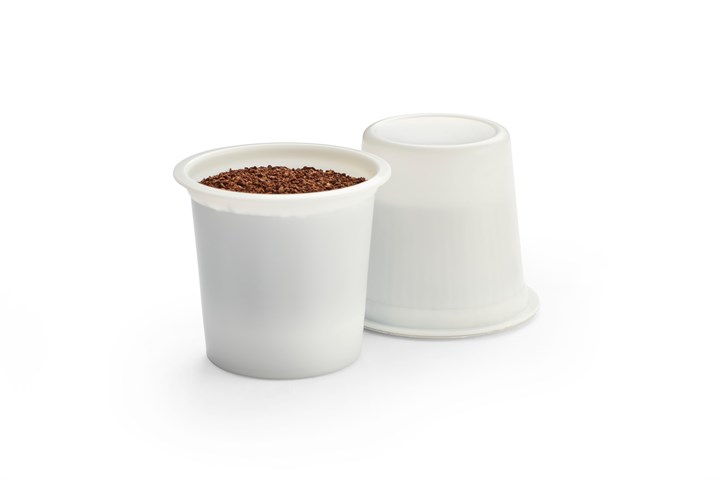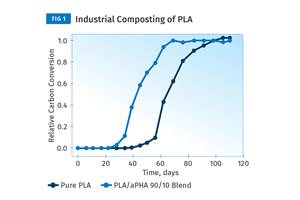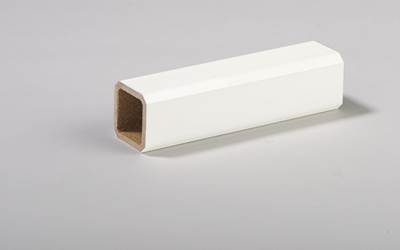An Encouraging Sign for Bioplastics
When a global packaging giant buys a stake in a bioplastics firm, that looks like a vote of confidence in a still-emerging materials field.
I have been writing about bioplastics since the 1980s or ’90s, when I was introduced to the concept by Coors, the brewing company (now Molson Coors), which was an early investigator of polylactic acid (PLA); and by ICI of the UK, which introduced Biopol, a type of PHA. Biopol was sold to Monsanto and then to a startup called Metabolix, which struggled mightily to commercialize polyhydroxyalkanoates (PHA), before selling the business to a South Korean agricultural firm in 2016.
In find the whole idea of turning microbes into biochemical reactors to make plastics fascinating. Plastics made by bugs! I once advised a Cargill Dow marketer to create an ad for PLA resins showing a photomicrograph of their specially bred bacteria or yeasts with the tag line, “Our satisfied workers.”

Compostable single-serve coffee pods are a growing application for biopolymers, like NatureWorks’ Ingeo PLA.
However, I have had to dial back my expectations for quick market success. There have been a number of false starts in bioplastics, but a few firms—NatureWorks (successor to Cargill Dow), Danimer Scientific and others—continue to carry the technology forward. Progress has been slow and uneven overall. Almost every time I visit a molder of rigid packaging, I ask if they have done anything with bioplastics. The typical answer is that they may have looked at it, but the cost was too high and customers just weren’t that interested.
So I read with interest an announcement last month that the Austrian-based, global packaging giant ALPLA had taken a “significant minority share” in a Slovakian R&D firm specializing in biopolymers, which was looking to market a 100% biobased, 100% biodegradable compound called Nonoilen, based on PLA, PHA and thermoplastic starch (more details here).
I find it encouraging that such a prominent molder of rigid packaging as ALPLA—with 21,600 employees and 178 sites in 45 countries—would make an apparently substantial bet on the future of bioplastics. ALPLA already operates its own recycling plants for PET and HDPE in Austria, Poland and Spain—and participates in recycling joint ventures in Mexico and Germany. The company says renewable, biodegradable polymers are part of its “holistic approach” to sustainability and a circular economy.
So I’m still rooting for bioplastics to realize their full potential and become more than bit players in the overall plastics market. Early generations of these materials were a lot like the “old days” of PVC: The raw resin by itself wasn’t worth much in terms of properties, and processing it wasn’t for the faint-hearted. But PVC compounding became a fine art employing a host of specially tailored ingredients to enhance PVC’s durability and processability. Bioplastics appear to be evolving in a similar direction. Nonoilen, for example, is claimed to have properties similar to PET, PE and PP. And the makers of biopolymers are breeding new generations of “bugs” to eat a wide variety of agricultural and wood waste in place of plant starches that could be used for human food production. ALPLA’s bioplastics investment looks like a vote of confidence that such progress will continue.
Related Content
NPE2024 Materials: Spotlight on Sustainability with Performance
Across the show, sustainability ruled in new materials technology, from polyolefins and engineering resins to biobased materials.
Read MorePHA Compound Molded into “World’s First” Biodegradable Bottle Closures
Beyond Plastic and partners have created a certified biodegradable PHA compound that can be injection molded into 38-mm closures in a sub 6-second cycle from a multicavity hot runner tool.
Read MoreBlend Amorphous PHA with PLA to Improve injection Molded Part Properties
Adding aPHA to PLA can boost a range of mechanical properties and expedite composting. Here are the details as well as processing guidelines for injection molding the blends.
Read MoreBASF Highlighting How They 'Make, Use and Recycle Future Solutions'
NPE2024: BASF is using its proprietary computer-aided engineering tool Ultrasim when designing for sustainability in a broad range of industries.
Read MoreRead Next
Metabolix Sells Bioplastics Business
With the sale of its business this month to food and bioengineering Korean giant CJ CheilJedang, Metabolix exits the bioplastics business.
Read MoreBiopolymers Strive to Meet Price/Performance Challenge
High expectations for biopolymers— an emerging class of materials derived at least in part from biological activity—are being tempered by the realities of the marketplace.
Read More
























